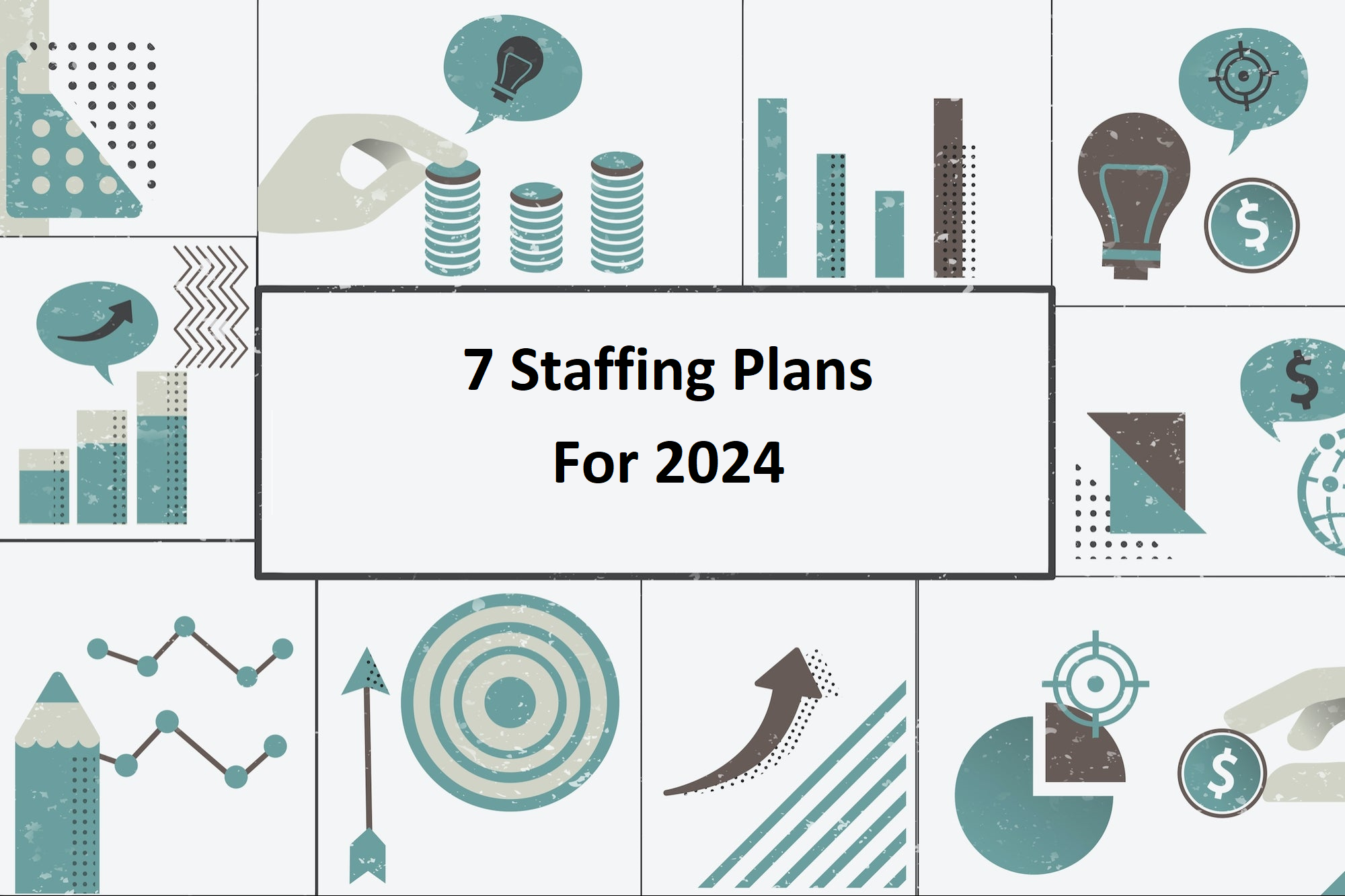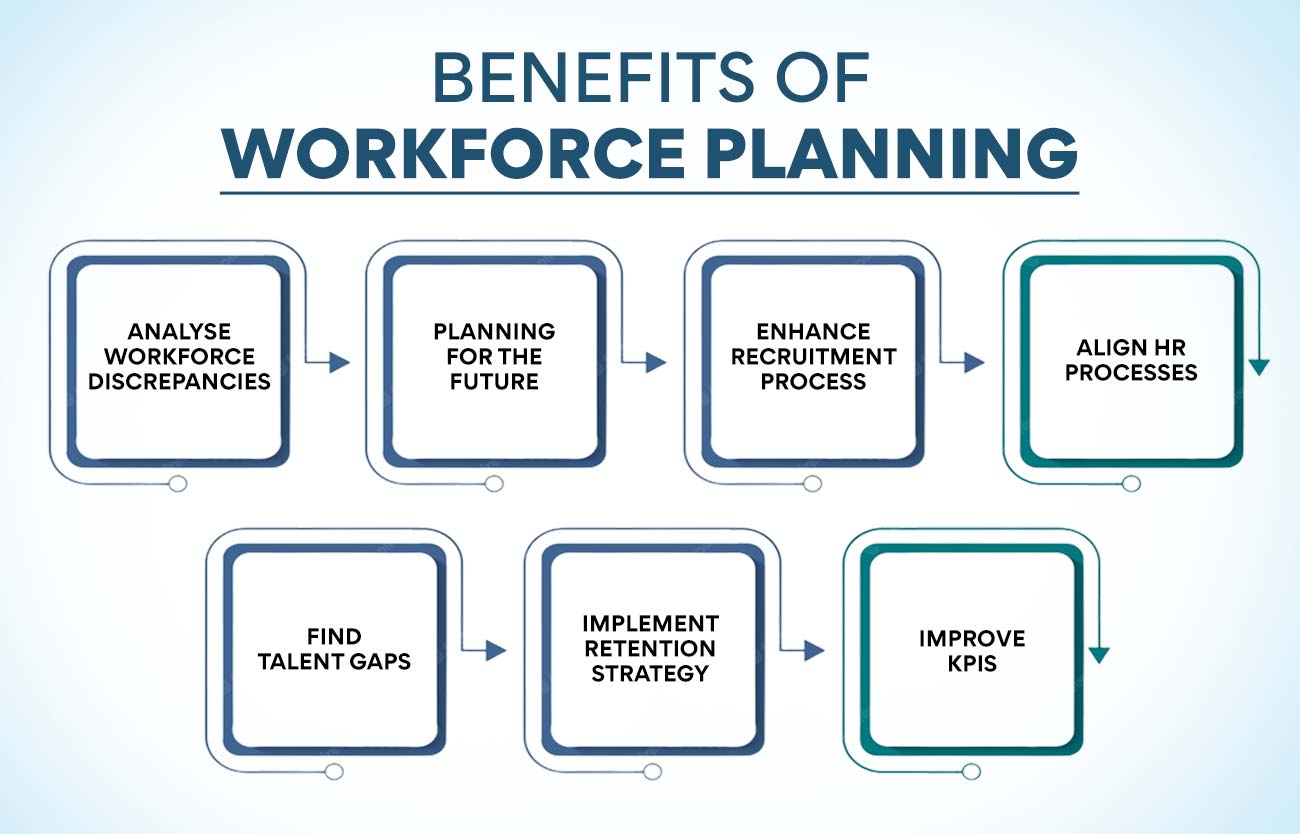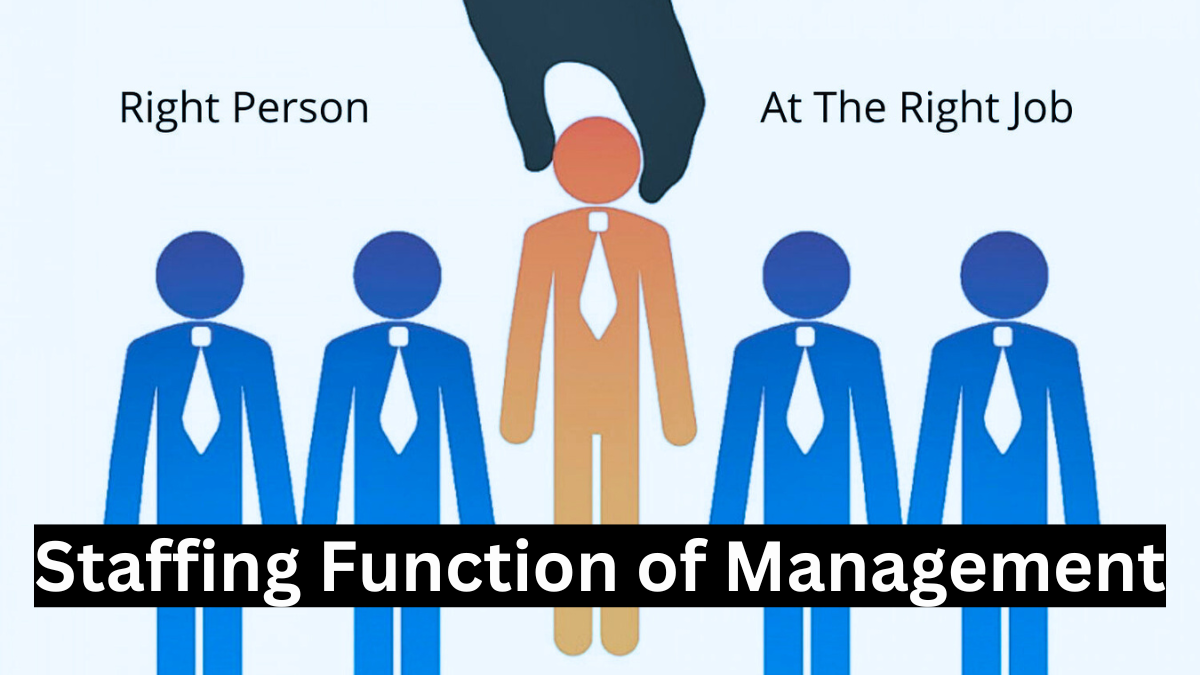
In the rapidly evolving landscape of 2024, Staffing Plans for 2024serve as the linchpin for organizational success. Revolutionizing the conventional approach, these forward-looking strategies are poised to reshape workforce dynamics. Imagine a paradigm where talent acquisition transcends traditional boundaries, embracing remote work, gig economy integrations, and AI-powered recruitment tools.
The staffing plans for 2024 are a symphony of innovation and precision, harmonizing talent optimization, reskilling initiatives, and diversity-centric recruitment methodologies. Expect a meticulous blend of predictive analytics driving recruitment decisions and empathetic leadershipapproaches nurturing employee retention.
What Is Staffing Plan?
A staffing plan is a strategic document that outlines an organization's workforce needs in order to achieve its businessgoals. It helps companies determine the number and types of employees they need, as well as the skills and experience required for each position. A well-crafted staffing plan can help companies avoid understaffing or overstaffing, which can lead to productivity problems and financial losses.
Key Components Of A Staffing Plan
- Creation of a timeline for implementation -This involves setting deadlines for hiring, training, and other staffing-related activities.
- Identification of budget constraints -This involves ensuring that the staffing plan is aligned with the organization's financial resources.
- Development of recruitment and retention strategies -This involves determining how toattract and retain the right talent for the organization.
- Forecast of future workforce needs -This involves considering factors such as businessgrowth, changes in technology, and new markets or products.
- Analysis of current workforce -This involves assessing the skills, experience, and performance of the current workforce to identify any gaps or areas where additional training or development may be needed.
Benefits Of Having A Staffing Plan
- Improved productivity - By ensuring that the organization has the right number of employees with the right skills, a staffing plan can help to improve productivity and efficiency.
- Reduced costs - Overstaffing can be a significant drain on an organization's resources. A staffing plan can help to ensure that the organization is not spending moneyon unnecessary positions.
- Increased employee morale -Employees are more likely to be engaged and satisfied with their jobs if they feel that they are valued and that the organization is invested in their success. A staffing plan can help to create a positive and supportive work environment.
- Improved decision-making -A staffing plan can provide valuable insights into the organization's workforce needs, which can help managers to make more informed decisions about hiring, training, and development.
Examples Of Staffing Plans
- A company that is planning to expand into a new market may create a staffing plan to identify the skills and experience that will be needed to support this growth.
- A manufacturing company that is implementing a new technology may create a staffing plan to train existing employees or hire new employees with the necessary skills.
- A retail company that is experiencing seasonal fluctuations in sales may create a staffing plan to adjust staffing levels accordingly.
How To Create A Staffing Plan?
- Define the organization's goals and objectives -What does the organization want to achieve? What are its strategic priorities?
- Analyze the current workforce -What skills and experience do current employees have? What are their strengths and weaknesses?
- Forecast future workforce needs -How will the organization's workforce needs change in the future? What are the key trends that will impact staffing?
- Develop recruitment and retention strategies -How will the organization attract and retain the best talent? What are the compensation and benefits packages that will be offered?
- Identify budget constraint - What is the organization's budget for staffing? What are the trade-offs between hiring new employees and training existing employees?
- Create a timeline for implementation -When will the staffing plan be implemented? What are the milestones that will be tracked?
Staffing plans should be reviewed and updated regularly to reflect changes in the organization's business goals, workforce needs, and budget. By having a well-developed staffing plan, organizations can ensure that they have the right people in place to achieve their desired outcomes.
7 Revolutionary Staffing Plans For 2024
As the world of work continues to evolve at an unprecedented pace, organizations are seeking innovative staffing strategies to adapt and thrive. Here are seven revolutionary staffing plans for 2024 that can help businesses build a resilient and future-ready workforce:
1. Embrace A Hybrid Workforce Model
The pandemic has accelerated the shift towards remote work, and many employees now value the flexibility and work-life balance it offers. Organizations that embrace a hybrid workforce model can attract and retain top talent while boosting employee satisfaction and productivity.
2. Leverage Data-driven Talent Analytics
Data-driven talent analytics can provide valuable insights into workforce demographics, skills gaps, and employee engagement. Organizations can use these insights to make informed decisions about talent acquisition, development, and retention.
3. Invest In Reskilling And Upskilling
The rapid pace of technological change means that organizations need to invest in reskilling and upskilling their employees to keep up with the latest trends. This can be done through training programs, mentorship opportunities, and tuition reimbursement.
4. Build A Talent Marketplace
A talent marketplace can connect employees with internal job opportunities, mentors, and learning resources. This can help employees develop their careers and stay engaged with the organization.
5. Partner With Gig Workers And Freelancers
The gig economy is growing rapidly, and organizations can benefit from partnering with gig workers and freelancers to access specialized skills and expertise on a flexible basis.
6. Utilize AI And Automation For Talent Management
AI and automation can be used to automate repetitive tasks, such as screening resumes and scheduling interviews. This can free up HR professionals to focus on more strategic work, such as talent development and succession planning.
7. Cultivate A Culture Of Diversity And Inclusion
A diverse and inclusive workplace is more innovative, productive, and successful. Organizations should focus on creating a culture where everyone feels welcome, respected, and valued.
By implementing these revolutionary staffing plans, organizations can build a future-ready workforce that is agile, adaptable, and ready to navigate the ever-changing world of work.
Strategic Workforce Planning For Growth
In today's dynamic and competitive business environment, strategic workforce planning (SWP) is essential for organizations to achieve their growth objectives. SWP is a proactive process that aligns the organization's workforce with its strategic goals. By understanding the current and future workforce needs, organizations can develop strategies to attract, develop, and retain the right talent.
The SWP Process
The SWP process typically involves the following steps:
- Assess the current workforce -This involves understanding the skills, experience, and demographics of the current workforce.
- Analyze the future workforce needs -This involves understanding the organization's strategic goals and the skills and experience that will be needed to achieve them.
- Identify the gaps -This involves comparing the current workforce to the future workforce needs.
- Develop strategies to address the gaps -This may involve recruiting, training, or developing new talent.
- Monitor and evaluate -SWP is an ongoing process, and it is important to monitor and evaluate the results to ensure that the strategies are effective.
Tools And Resources For SWP
There are a number of tools and resources available to help organizations with SWP. These include:
- Workforce planning software -This software can help organizations track and analyze their workforce data.
- Labor market data -This data can help organizations understand the current and future supply of talent.
- Skills assessment tools -These tools can help organizations assess the skills of their current workforce.
Additional Tips For SWP Success
- Get buy-in from senior leadership -SWP is most successful when it has the support of senior leadership.
- Involve HR in the process -HR can play a key role in developing and implementing SWP strategies.
- Be flexible -SWP needs to be flexible enough to adapt to change.
- Use data to drive decision-making -Data is essential for making informed SWP decisions.
- Communicate effectively -SWP strategies need to be communicated effectively to employees.
Align Your Budget With Your Staffing Needs
Aligning your budget with your staffing needs is crucial for ensuring your business has the right people in place to achieve its goals without overspending. Here's a step-by-step guide to aligning your budget with your staffing needs:
1. Assess Your Current Staffing Situation
- Review your organizational structure and identify key roles.
- Analyze employee skills, experience, and performance.
- Evaluate current staffing levels against workload demands.
2. Forecast Future Staffing Needs
- Consider business growth projections and strategic initiatives.
- Anticipate changes in technology, market trends, and customer demands.
- Account for potential turnover and attrition rates.
3. Develop A Staffing Budget
- Determine compensation costs for each role, including salaries, benefits, and taxes.
- Factor in recruitment and onboarding expenses.
- Consider budget constraints and prioritize essential positions.
4. Utilize Workforce Planning Tools
- Leverage HR software to track employee data and forecast staffing needs.
- Analyze labor market trends and identify potential talent pools.
- Utilize cost-benefit analysis to evaluate staffing decisions.
5. Optimize Staffing Costs
- Consider alternative staffing models, such as temporary workers, contractors, or freelancers.
- Cross-train employees to handle multiple tasks and reduce reliance on specialized skills.
- Implement performance-based compensation to incentivize productivity.
6. Evaluate And Adjust Staffing Plans Regularly
- Monitor actual staffing costs against budgeted amounts.
- Assess the impact of staffing decisions on employee engagement and productivity.
- Adjust staffing plans as business needs and budget constraints evolve.
Remember, aligning your budget with your staffing needs is an ongoing process that requires continuous evaluation and adjustment. By following these steps, you can ensure that your staffing decisions are strategic, cost-effective, and aligned with your overall business objectives.
What Are Five Staffing Principles?
Here are five key staffing principlesthat can help organizations build a strong and effective workforce:
1. Employee well-being - Prioritizing employee well-being is essential for attracting and retaining top talent. Organizations should implement initiatives that promote work-life balance, physical and mental health, and employee satisfaction.
2. Diversity and inclusion -Embracing diversity and inclusion in the workplace fosters a more innovative, creative, and engaged workforce. Organizations should strive to attract and retain talent from diverse backgrounds and create a culture of respect and belonging.
3. Continuous talent development -Investing in the development of existing employees is crucial for maintaining a high-performing workforce. Organizations should provide opportunities for training, education, and mentorship to help employees stay up-to-date with industry trends and enhance their skills.
4. Strategic alignment -Staffing decisions should be aligned with the overall business strategy and objectives. Organizations should consider their long-term goals and growth plans when determining their staffing needs and making hiring decisions.
5. Right person, right job -This principle emphasizes the importance of matching the skills, experience, and motivations of individuals to the specific requirements of the job. When theright person is placed in the right job, it leads to increased productivity, job satisfaction, and overall organizational success.
By adhering to these principles, organizations can build a workforce that is aligned with their strategic goals, equipped with the necessary skills, and motivated to contribute to their success.
Here are some tips for creating an effective staffing plan:
- Involve key stakeholders in the planning process.
- Use data and analytics to inform your decisions.
- Be flexible and adaptable to changing circumstances.
- Communicate the staffing plan to all employees.
Frequently Asked Questions About Staffing Plans For 2024
What Is Effective Staffing Strategy?
Plan ahead: Effective staffing plans are based on carefully analyzing current resources, predicting future needs, identifying gaps and formulating strategies to fill these gaps, and aligning talent needs with business objectives.
What Is HR Planning In Staffing?
Human resources planning ensures the best fit between employees and jobs while avoiding manpower shortages or surpluses. There are four key steps to the HRP process. They include analyzing present labor supply, forecasting labor demand, balancing projected labor demand with supply, and supporting organizational goals.
What Are Some Of The Trends That Will Impact Staffing Plans In 2024?
Some of the trends that will impact staffing plans in 2024 include:
- The continued growth of remote work
- The increasing demand for skills in areas such as technology, data analytics, and cybersecurity
- The aging workforce and the need for succession planning
- The rise of the gig economy and the use of temporary workers
What Are Some Common Staffing Challenges That Organizations Face?
Some common staffing challenges that organizations face include:
- Finding qualified candidates in a tight labor market
- Retaining top talent
- Managing a diverse and inclusive workforce
- Adapting to changing workforce demographics
Conclusion
The staffing plans charted for 2024 represent an intersection of adaptability, technology, and human-centric strategies. They signify a departure from traditional recruitment norms towards a more agile and inclusive approach, acknowledging the dynamic nature of the modern workforce. As organizations navigate through unprecedented changes and disruptions, these plans stand as a beacon of resilience, empowering companies to thrive amidst uncertainty by embracing innovation and flexibility.
Moreover, the evolution of staffing strategies in 2024 underscores the significance of a cohesive and future-ready workforce. By amalgamating cutting-edge technologies, predictive analytics, and a heightened emphasis on employee well-being and skill development, these plans lay the foundation for sustainable growth and competitive advantage in an ever-evolving business landscape.


